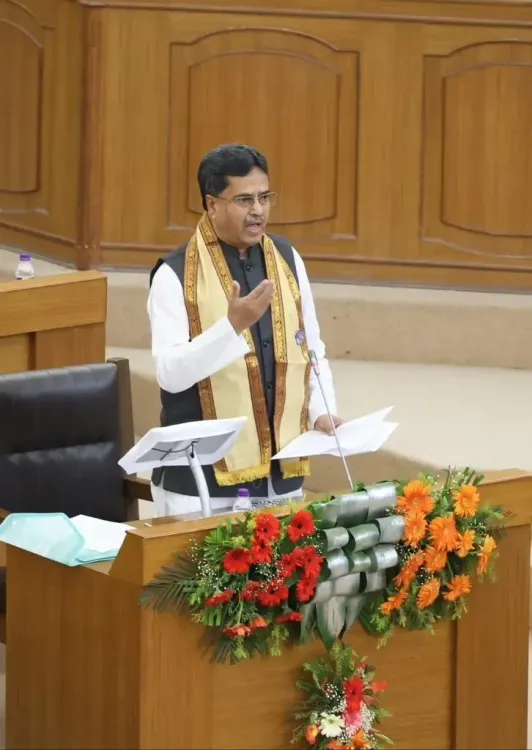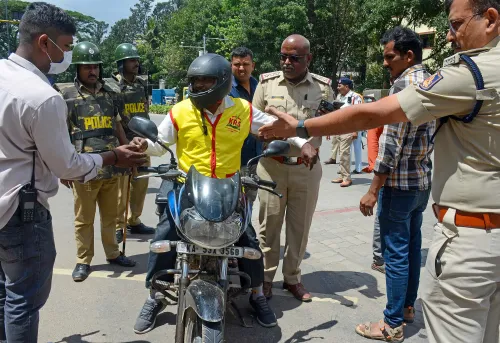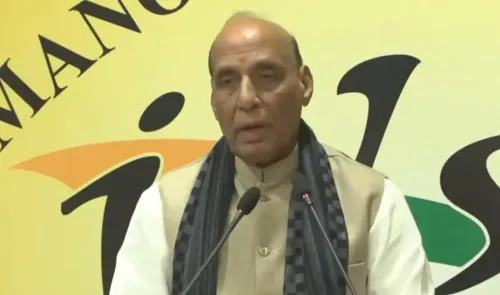Initiatives by Tripura CM to Enhance Howrah River's Navigability

Synopsis
Key Takeaways
- Tripura government is enhancing Howrah River's navigability.
- Two funding proposals submitted to the Central government.
- Howrah River vital for agriculture and livelihoods.
- Cleanup initiative to remove silt and waste.
- Public awareness needed to prevent pollution.
Agartala, March 27 (NationPress) Tripura's Chief Minister Manik Saha announced on Thursday that the state government is implementing initiatives to improve the navigability of the Howrah River, which will also help mitigate flooding issues in Agartala city.
In response to a calling attention notice in the state assembly, the Chief Minister revealed that two concept proposals worth Rs 248 crore and Rs 145.71 crore have been drafted and submitted to the Central government for potential funding.
Tripura is home to 12 major rivers, with eight of them, including the Howrah and Gomati rivers, flowing into Bangladesh.
Saha, who also oversees the Water Resources Division, emphasized that the 61.20 km long Howrah River, which traverses alongside Agartala city, is crucial for agriculture, drinking water, fishing, and the livelihoods of millions.
Out of the total 61.20 km of the Howrah River, 52 km is situated in India, while 9.20 km extends into Bangladesh, where it merges with the Titas River before flowing into the Meghna River.
The Chief Minister indicated that the state government has initiated a series of actions to permanently resolve flooding in Agartala city by enhancing the navigability of the Howrah River.
He informed that the Water Resources Division of the Public Works Department is currently executing a special initiative aimed at clearing silt, solid waste, and debris from the banks of the Howrah River, with completion expected within the next six months.
The Howrah River originates from the western edge of the Baramura Hill Range and flows westward, eventually merging with the Titas River in Bangladesh.
Saha noted that prior to 1900, the Howrah River basin was sparsely populated. However, over time, the population along the riverbanks in Agartala city, the state capital, has seen a significant increase. He remarked that residents along the Howrah River rely on it for their daily needs and economic benefits.
“Nevertheless, their activities, both direct and indirect, have contributed to water pollution and altered the river’s structure. Since the early 20th century, the flow of the Howrah River has experienced changes. Presently, the demand for its water for drinking and agricultural purposes is growing in greater Agartala and surrounding areas. The river’s natural flow has been disrupted due to the construction of roads, embankments, bridge piers, causeways, and sandbags intended for water collection. Consequently, the navigability of the river is gradually diminishing,” stated the Chief Minister.
Moreover, he highlighted that human activities such as land-use modifications, sand mining, water harvesting, solid waste disposal, agriculture, and hill cutting for brick production have adversely affected the river's course and natural dynamics.
The Chief Minister further pointed out that extensive deforestation has intensified soil erosion, resulting in sediment accumulation in the river, which has decreased the Howrah River’s water-holding capacity and increased the risk of severe flooding even with minimal rainfall.
“Additionally, there is an urgent need to foster public awareness to prevent the dumping of waste and garbage into the Howrah River to ensure that the natural flow of the river is not obstructed and that the water remains unpolluted,” he concluded.









